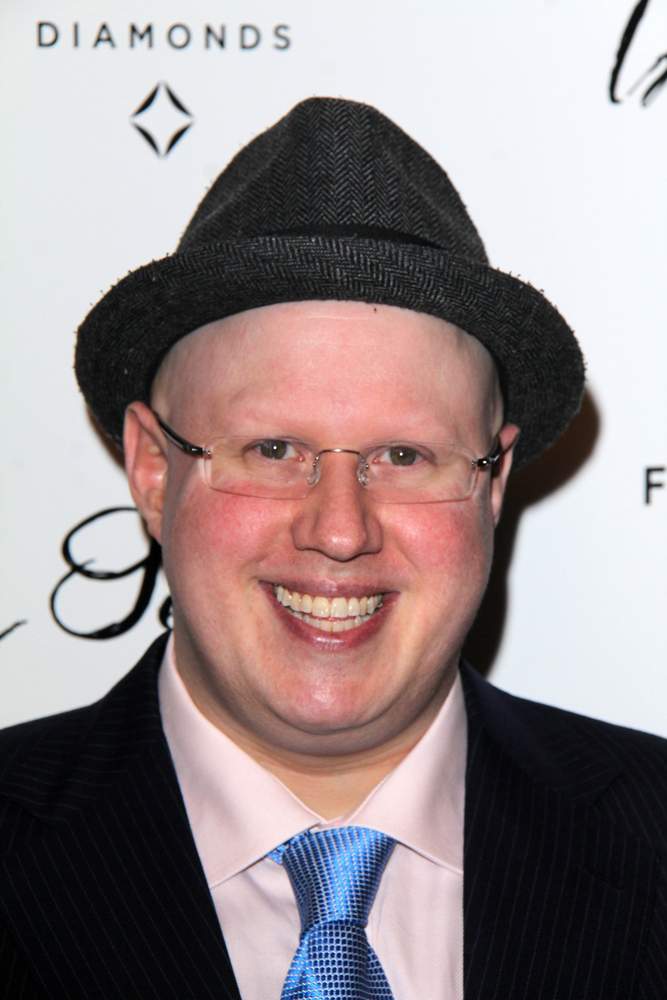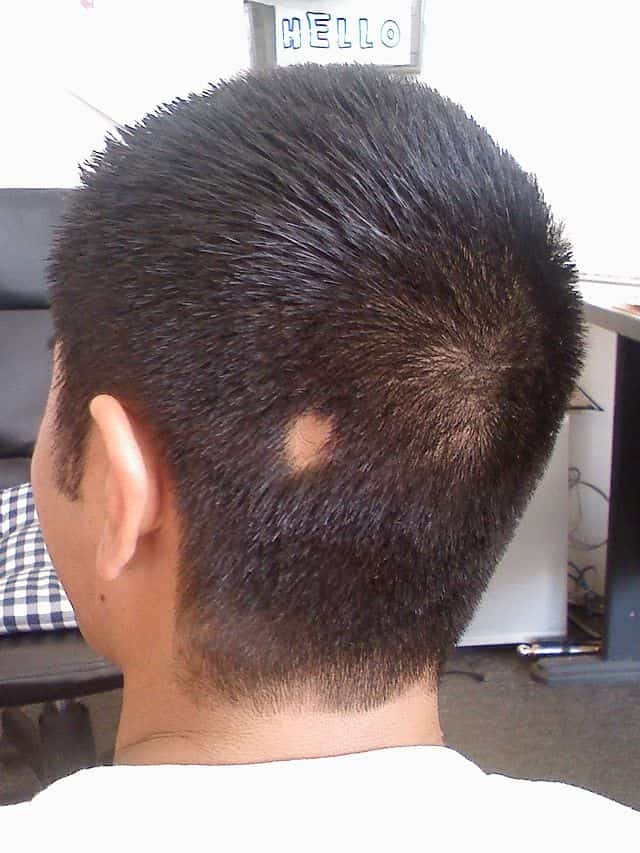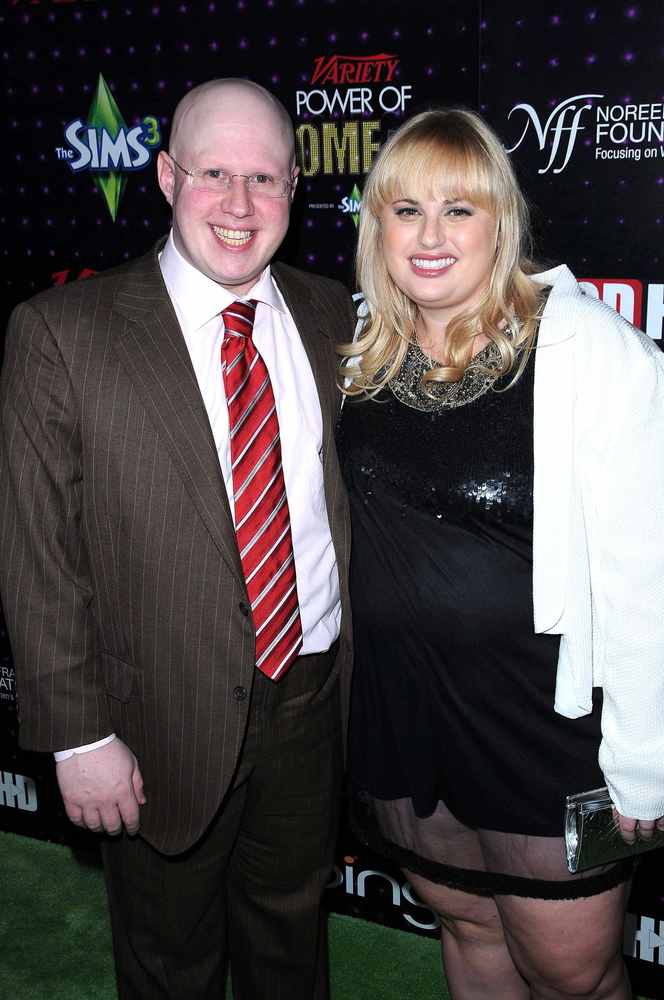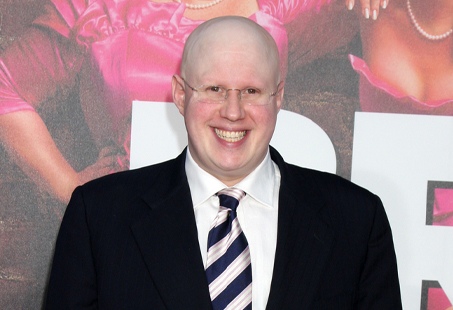Matt Lucas has a distinctively stark bald head. But it’s not just the absolute lack of hair that makes it so unusual. After all, Dwayne Johnson, Stanley Tucci, Patrick Stewart, and Vin Diesel are all famously bald actors.
In Matt Lucas’ case, you just need to look a little further down to see why it looks so different. The comedian has no eyebrows and no facial hair. Moreover, he has super light eyelashes, so his face appears to be completely hairless.
For the comedian, however, this was not a choice. And contrary to some speculations, it’s not cancer. So, what exactly happened to Matt Lucas’ hair? Let’s find out.
Who Is Matt Lucas?
Born Matthew Richard Lucas in Paddington, London, Matt Lucas is a comedian, actor, writer, and TV presenter. Many know him as the funnyman from BBC’s Little Britain (winning him 3 BAFTAs) and Come Fly With Me.

However, before doing any of these shows, he gained fame as the giant baby in Vic and Bob’s Shooting Stars – a comedy quiz show. For the actor, it was his “big break.” And he credits it to him being bald.
In his memoir, “Little Me: My Life from A-Z,” he says, “Being bald has helped me in my career. Would I have had my big break as a baby in Shooting Stars if I had had a full head of hair?”
Therefore, from early on in his career, Matt’s alopecia turned out to be his strength rather than weakness (although it shouldn’t discount all the bullying he still experiences because of it to date).
Over the years, he has worked on many TV films and shows like Mash & Peas, Rock Profile, Catterick, Popetown, Doctor Who, and as the host of the British Bake Off.
He’s even starred in movies like Alice In Wonderland and Through the Looking Glass, Bridesmaids, Gnomeo & Juliet, Sherlock Gnomes, and Les Misérables. He’s also a part of the Timothée Chalamet upcoming film Wonka.
Does Matt Lucas Have Alopecia?
Matt Lucas has a very rare type of alopecia areata known as alopecia universalis. It’s an autoimmune condition that results in complete loss of hair from the scalp, face and body.

According to a systematic review published in the Journal of the American Academy of Dermatology, alopecia universalis has a prevalence rate of only 0.03%.
In addition, young children (5 years and older) with alopecia areata may be more likely to go on and develop more severe forms of alopecia (like alopecia universalis), according to the National Alopecia Areata Foundation.
Unfortunately for Matt, there was no progression towards alopecia universalis. He started with this type of alopecia, and that too at a very young age.
Of course, the experience was more than distressing for the TV star. It became a part of him from the moment it happened. “I was never allowed to forget for one moment that I was bald. If I went swimming or to the cinema or got the bus or went to a shop or simply walked down the street, adults and children stared at me.”
The comedian even recounts that it was as if he was nothing but his alopecia. “…no other aspect of me really mattered, because I was the kid with no hair.”
This may have something to do with what’s known as the “halo effect.” It’s when a singular trait leads you to form a generalised impression of someone. Other than being called a “baldy,” Matt was also referred to as a “skinhead” because of his alopecia.
How Did Matt Lucas Get Alopecia?
Back in 1978, when he was just 4 years old, Matt went on a family vacation to Portugal. And as a child, he has this tendency to kind of wander off and lag behind.
Unfortunately, one day this happened, and Matt was left behind on one side of the road while his family was on the other side. And in trying to join them there, he was hit by a car on the road. That accident, for the longest time, was blamed for Matt’s alopecia by many doctors.
It didn’t happen suddenly, though. Not even a few months after the accident. In fact, it happened a whole two years after the accident in 1980.
When he was just 6, Matt remembers waking up to find “several hairs” on his pillow. It happened the day after that, only in greater quantities. And once the summer was gone, so was his hair.

The few hairs that were left on his scalp, he just pulled them out, and that was that. Because his hair didn’t grow back for a year after the first episode of alopecia universalis.
His doctors said it was a “delayed response to the shock of being knocked down by the car.” Now shock can cause a type of hair loss known as telogen effluvium. However, usually, it starts just a few months after a stressful event (like an accident).
Regardless, the accident was held responsible for the alopecia until once he grew up, a doctor told him that it was actually his abnormal immune system that led to the hair loss.
Here, one more interesting thing that happened during his eventual diagnosis was that the doctor asked Matt if he had “asthma, eczema, hay fever or allergies.” And to all that, Matt said yes.
Curiously enough, these conditions can be “comorbid” – occurring at the same time. A study published in the Open Access Macedonian Journal of Medical Sciences found a significant association between alopecia areata and hay fever, eczema, and asthma.
Can Matt Lucas Grow His Hair Back?
The thing about alopecia universalis is that it can occur in episodes. There can be periods of dormancy and active hair loss.
Matt has also experienced this, where his hair grew for some time only to fall out again. However, during regrowth, he noticed that his new hair was thinner. Which is something that alopecia areata can do. It can also change the colour of the hair, making it grey or white).
Back in 2021, Matt shared a picture of himself (during lockdown) with a moustache that was his “first ever.” Although he did sign off the image by saying, “I don’t have eyebrows so it looks a bit weird.”
Therefore, in Lucas’ experience with alopecia universalis, the hair growth isn’t homogeneous. He grew out a moustache for the first time, but this didn’t co-occur with the regrowth of his eyebrows or scalp hair.
What Treatment Did Matt Lucas Get For His Alopecia?
Initially, there weren’t that many treatment options available for the management of alopecia areata. And so Matt took to experimenting with acupuncture to stimulate hair growth.

Acupuncture is an alternative therapy for hair loss. And there’s even some research that supports its efficacy. For instance, there’s a case study published in the World Journal of Acupuncture-Moxibustion (WJAM) that reports the treatment of alopecia universalis with acupuncture.
However, that’s just one case report, and overall, the research on it is not conclusive. It didn’t work out for Matt either, and he also didn’t enjoy the experience of getting needles stuck in him.
Today, there are more available treatment options for alopecia universalis, such as steroids, topical immunotherapy, immunosuppressive agents, JAK inhibitors and even laser therapy.
However, even with treatment, there’s the possibility of your hair falling out again. And it’s also possible that a treatment might not work for you.
Additionally, it’s up to the person to decide whether or not they want to undergo the treatment. These treatments can be quite risky and difficult to undergo.
How Did Matt Lucas Cope With His Hair Loss?
When he was still a child, Matt wore wigs for a while. Sadly enough, he was the subject of much ridicule in his school for this. He also didn’t like wearing the wig because the lack of eyebrows more or less gave it away.
Eventually, though, Matt simply embraced his condition and learned to live with it. He has said, “Right up until I became famous, my lack of hair was considered the most – perhaps even the only – notable thing about me.”
Even now, his hair loss is a part of his persona, but he’s known more for his comedic talents than just his alopecia.
Conclusion
Matt Lucas developed alopecia at a very young age. And at a time when children are trying to define themselves, being reduced to nothing but a “bald guy” is deeply saddening. And it can make a person extremely conscious about the way they look.
It’s important to be empathic and non-judgemental when you come across someone who’s experiencing hair loss. Alopecia, in general, is very common, and millions of people suffer from it.
And if you’re too, you should seek the help of an experienced and board-certified professional. Hair loss can occur due to many reasons, and it’s important to get diagnosed by a professional.


